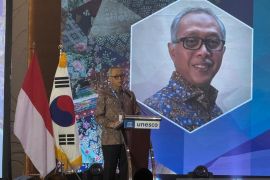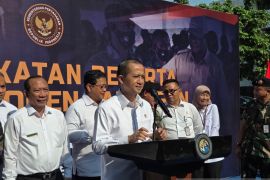The national inequality ratio, also known as gini ratio, declined 0.01 percent in one semester ending in September, he said here Monday.
"This means that our efforts to improve the income of people at the bottom level have been running well," he said.
To curb the gini ratio further, the government will keep improving programs which support the economy of low-income people to reduce the social gap in the community, he said.
"We can do so by helping the economy of low income people through small and medium businesses and helping their health and education expenses. It is true that there is still a gap, but the effort is (one of) the ways to reduce the gap," he said.
In addition, the governments policy to cut lending rates to single digit rates is also one of the efforts to reduce the gini ratio, he said.
The Central Statistics Agency (BPS) has recorded a decline in the national inequality ratio by 0.01 points to 0.40 in September 2015 from 0.41 in March 2015.
"This means that there has been improvement in the evenly distribution of income," BPS Chairman Suryamin said in a press briefing here Monday.
The gini ratio is an indicator to measure inequality or gap in the distribution of income in the community at a range of 0 to 1. This means, the higher the gini ratio the higher the inequality in the community.
Suryamin said that among the factors which affect the improvement of the inequality ratio are an increase in the wages of farm workers and construction workers which rose 1.21 percent and 1.05 percent, respectively, in the March to September, 2015 period.(*)
Editor: Heru Purwanto
Copyright © ANTARA 2016











